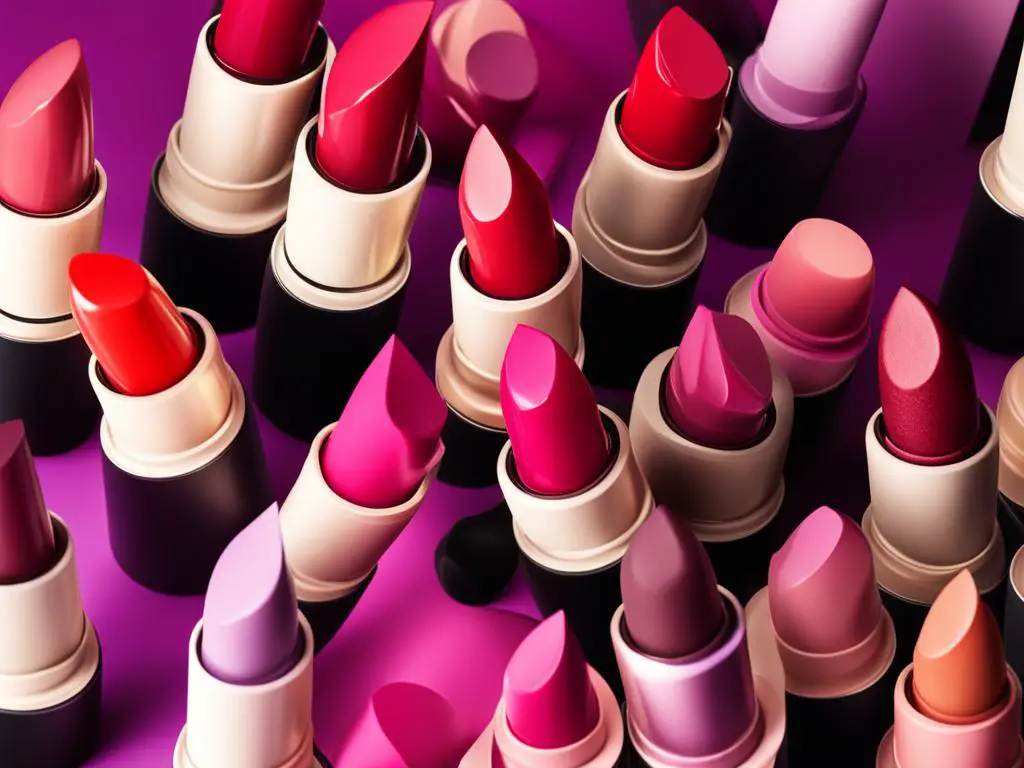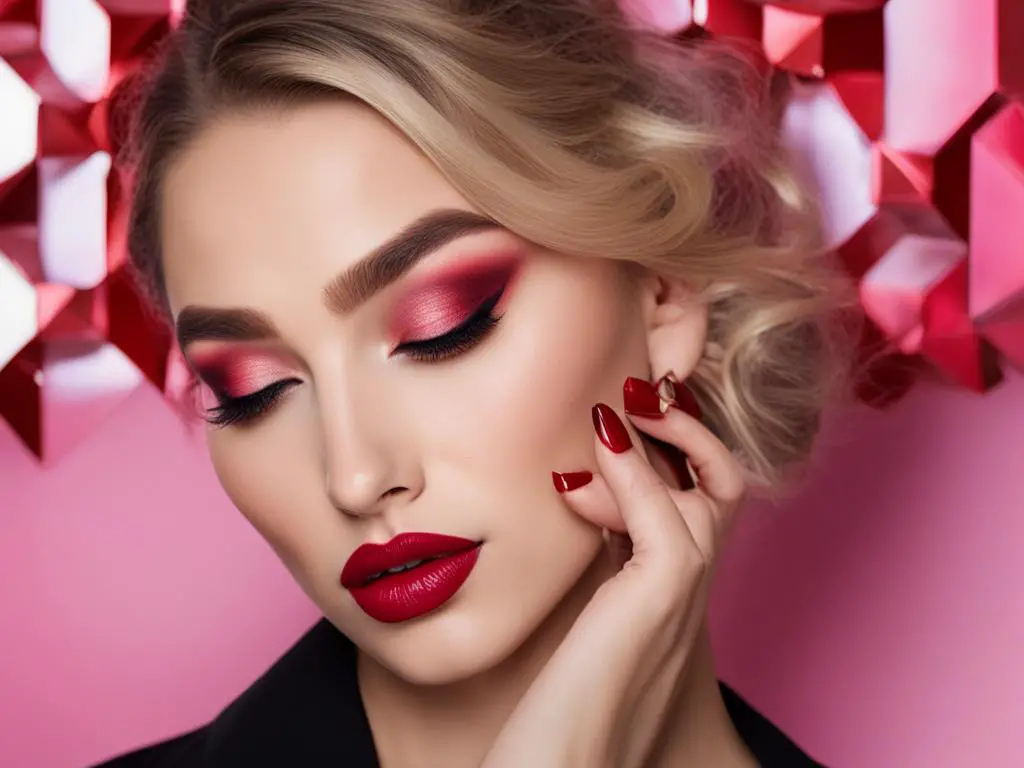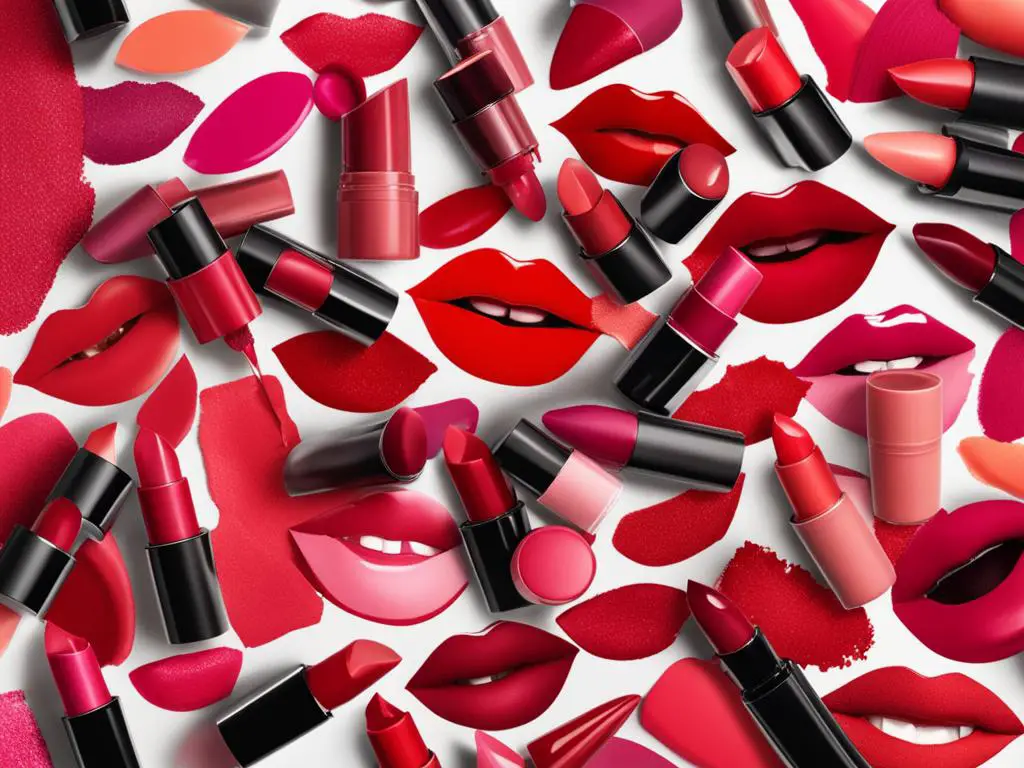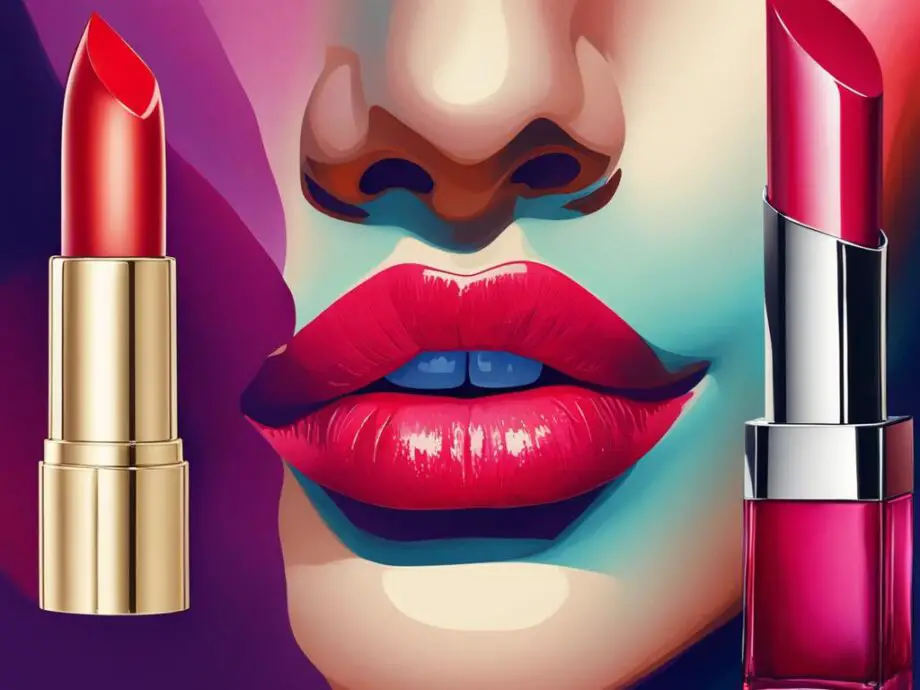When it comes to enhancing your pout, you may be wondering whether to reach for lip color or traditional lipstick. While they may seem similar, there are notable differences to consider. Additionally, there are a variety of other lip color options available, including liquid lipstick, lip balm, lip stain, and lip gloss. But how do these products differ, and which one is right for you?
In this section, we’ll explore the differences between lip color and lipstick, as well as their staying power and longevity. We’ll also compare these options to other lip color products on the market. By the end, you’ll have a better understanding of which product suits your style and beauty needs.
Key Takeaways
- Lip color and lipstick are two distinct products with differences in formulation, finish, and staying power.
- While traditional lipstick is a popular choice, other lip color options such as liquid lipstick, lip balm, lip stain, and lip gloss also have unique features and benefits.
- Consider your daily routine and preferences when choosing a lip color product, and don’t be afraid to try something new!
Understanding Lip Color and Lipstick
Before diving into the differences between lip color and lipstick, it’s important to first understand each product’s definition and unique attributes.
Lipstick is traditionally a waxy, pigmented product that is used to enhance the color of lips, often paired with lip liner. Lip color, on the other hand, is a more general term that encompasses a broader range of lip products, including traditional lipstick, lip balm, lip stain, and even lip gloss.
When considering formulations, lip color and lipstick can have different textures and finishes. Lipstick often has a creamy or matte consistency, while lip color can range from balmy to glossy. Additionally, lipstick may have more staying power than some lip color options, depending on the particular formulation.
It’s also worth noting that while lip color and lipstick are often used interchangeably, there is a difference in the literal meaning of the two terms. Lip color refers to the color of the lips in general, while lipstick specifically refers to a pigmented product applied to enhance the lips’ hue.

“Understanding the differences between lip color and lipstick can help you better choose the best product for your needs and preferences.”
Staying Power: Lip Color vs Lipstick.
One of the most important factors in choosing a lip product is its staying power. Whether you’re heading to work, a night out, or running errands, you want a lip color that lasts. So, how do lip color and lipstick compare when it comes to staying power?
When considering staying power, it’s important to think about factors like transferability, smudging, and fade resistance. Lip color products, such as lip stains and liquid lipsticks, tend to have better staying power than traditional lipsticks. This is because they contain less emollients, making them less transferable and less prone to smudging.
In contrast, traditional lipsticks often contain more emollients, which give them their creamy texture but also make them more prone to transferring or fading throughout the day. However, some brands now offer long-wearing lipstick options that promise all-day staying power.
Ultimately, the staying power of a lip color or lipstick will depend on the individual product and its formulation. Before purchasing, it’s a good idea to read product reviews or consult with a salesperson to determine which option will offer the best longevity for your pout.
Lip Color Options: Traditional Lipstick vs Liquid Lipstick
If you’re deciding between traditional lipstick and liquid lipstick, it’s important to understand the differences in their formulation and application. Traditional lipstick comes in a bullet and has a creamy, matte, or satin formula. On the other hand, liquid lipstick comes with a wand applicator and typically dries down to a matte finish.

Traditional lipstick is easy to apply, and its formula allows for sheer or buildable coverage. It comes in a range of shades and finishes, making it a versatile option for any occasion. Although traditional lipstick can transfer and require touch-ups throughout the day, some formulations have improved staying power.
Liquid lipstick, on the other hand, boasts transfer-proof, long-lasting wear. Its highly pigmented formula creates bold color with a smooth finish. However, liquid lipstick can be difficult to apply and may require a steady hand. It can also be drying, so be sure to moisturize your lips before use.
| Traditional Lipstick | Liquid Lipstick | |
|---|---|---|
| Formula | Creamy, matte, or satin | Dries down to a matte finish |
| Application | Bullet | Wand |
| Finish | Range of finishes (satin, matte, glossy) | Smooth matte finish |
| Staying Power | May transfer and require touch-ups | Transfer-proof and long-lasting |
Ultimately, the decision between traditional lipstick and liquid lipstick comes down to personal preference and the intended use. Traditional lipstick may be better suited for daily wear or more subtle looks, whereas liquid lipstick is an excellent option for special events or long days when touch-ups are inconvenient.
Lip Color Alternatives: Lip Balm, Lip Stain, and Lip Gloss
Are you tired of traditional lipstick and looking for something different? Let’s explore some unique lip color alternatives that can enhance your pout!
Lip Balm
While not technically a lip color, lip balm can give your lips the subtle tint you desire, along with some much-needed hydration and protection. Choose a lip balm with a touch of color for a natural and effortless look. Plus, the moisturizing benefits will keep your lips healthy and smooth.
Lip Stain
If you want a long-lasting option with a pop of color, lip stain may be perfect for you. Unlike traditional lipstick, lip stain lasts for hours, making it great for busy days. Plus, it won’t transfer or smudge, making it ideal for eating, drinking, and kissing. Try applying a clear gloss over your lip stain to give it some extra shine.
Lip Gloss
If you love a glossy finish, lip gloss is the way to go. It adds shine and dimension to your lips, making them appear fuller and plumper. Gloss is an excellent alternative to lipstick for a more understated look. Choose a gloss with a tint of color for an added touch of glamour.

While traditional lipstick may be a go-to for many, don’t be afraid to explore other lip color options, like lip balm, lip stain, and lip gloss. Each alternative has unique features that can enhance your pout in their own way. Find the perfect one for every occasion!
Conclusion
After exploring the differences between lip color and lipstick, as well as various formulations and alternatives, we hope you now have a better understanding of which option suits your style and offers the best staying power. It’s important to note that the difference between lip color and lipstick is significant and can affect your overall look and feel, so choosing the right option is key.
If you prefer a product that offers staying power and longevity, then traditional lipstick or liquid lipstick may be the right choice for you. On the other hand, if you prefer a more natural and subtle look, lip balm or lip stain may be a better option.
Ultimately, the decision between lip color vs lipstick is a personal one, based on your preferences, needs, and style. Whatever you choose, make sure it makes you feel confident and enhances your natural beauty for the perfect pout.
FAQ
What is the difference between lip color and lipstick?
Lip color refers to any product that adds color to the lips, including lipstick, lip stain, and lip gloss. Lipstick, on the other hand, specifically refers to a solid, pigmented product that is applied onto the lips to add color and definition.
How does lip color compare to traditional lipstick in terms of staying power?
Lip color, including long-wearing lipsticks, generally has better staying power than traditional lipstick. This is due to advancements in formulas and the incorporation of long-lasting ingredients that help the color adhere to the lips and resist fading or smudging throughout the day.
How long does lip color typically last?
The longevity of lip color varies depending on the specific product, formulation, and individual factors such as eating, drinking, and talking. Generally, long-wearing lip colors can last anywhere from 4 to 8 hours, while traditional lipsticks may require touch-ups every 2 to 4 hours.
What are the differences between liquid lipstick and traditional lipstick?
Liquid lipstick is a formulation that usually comes in a liquid or cream form and dries down to a matte or semi-matte finish. Traditional lipstick, on the other hand, is typically a solid, waxy stick that provides a creamy or satin finish. Liquid lipsticks often have better staying power and are more transfer-resistant than traditional lipsticks.
Is lip balm considered a lip color?
Lip balm is not typically considered a lip color. It is primarily used to moisturize and protect the lips. However, there are tinted lip balms available that can add a subtle hint of color to the lips, blurring the line between lip balm and lip color.
How does lip stain compare to lip color in terms of longevity?
Lip stain is designed to leave a long-lasting tint on the lips. It typically has better staying power than regular lip color or lipstick, as it seeps into the skin to stain the lips. Lip stains can last for several hours, even through eating and drinking, providing a natural-looking flush of color.
What are the main differences between lip color and lip gloss?
Lip color refers to any product that adds color to the lips, including lip gloss. Lip gloss is typically a transparent or semi-transparent product that adds shine and dimension to the lips, with or without added color. Lip color, on the other hand, includes various formulations such as lipstick, lip stain, and liquid lipstick, which provide more intense pigmentation and coverage.
